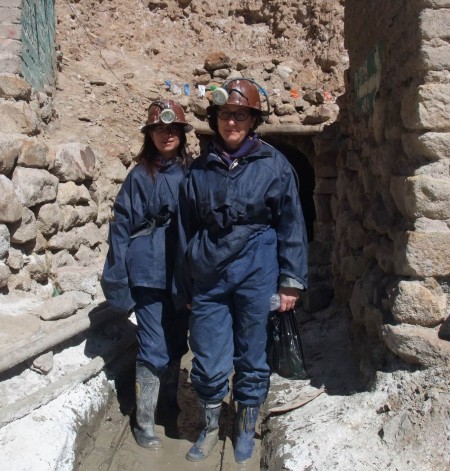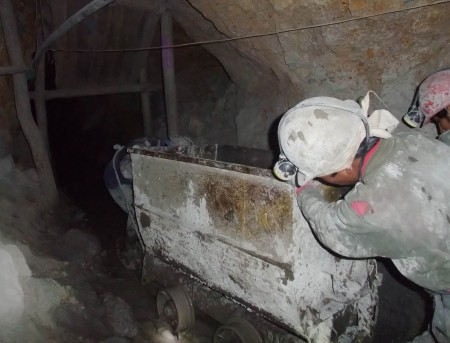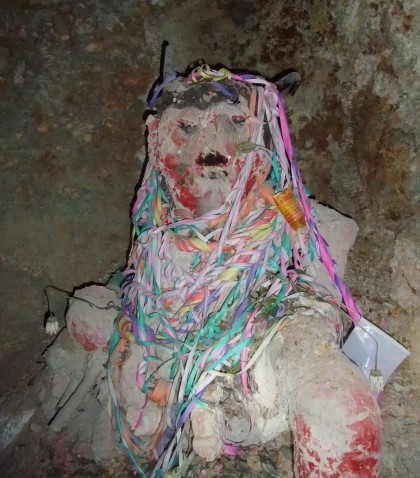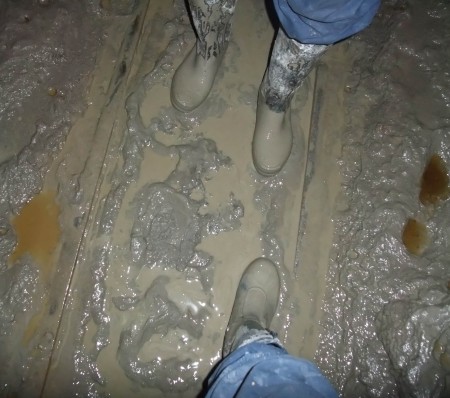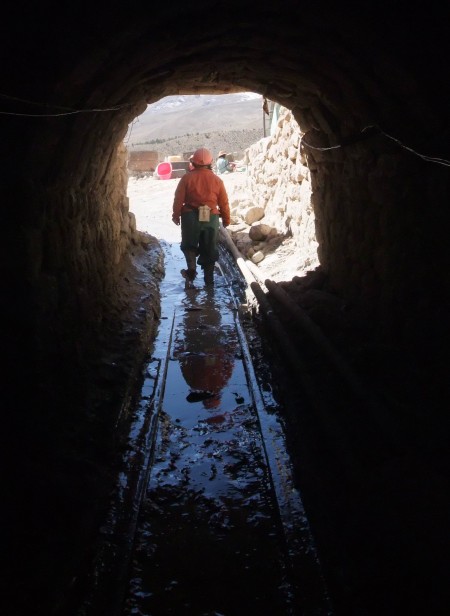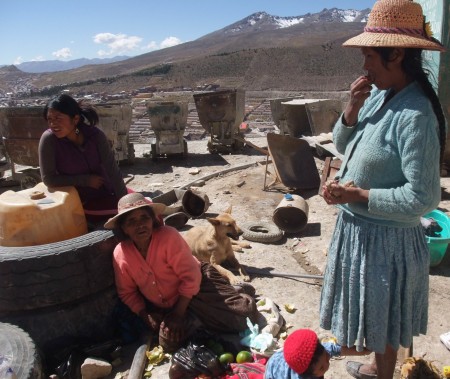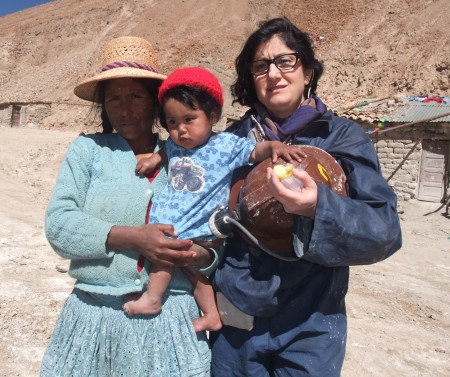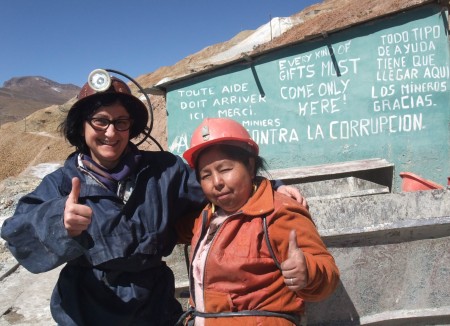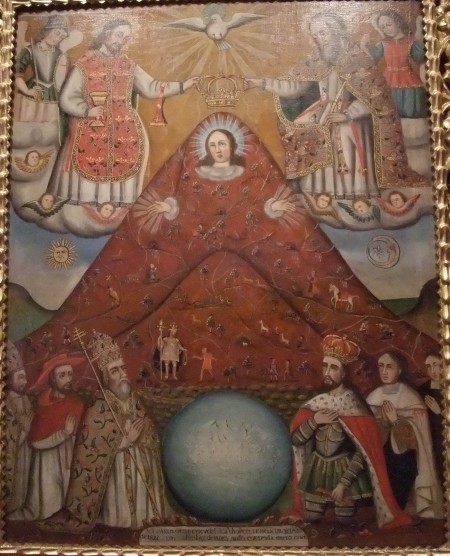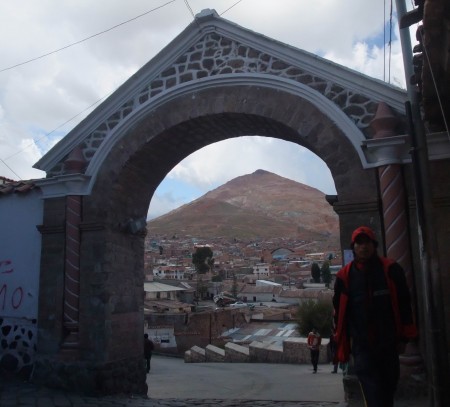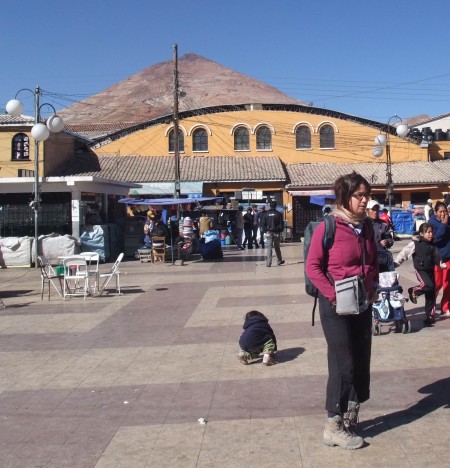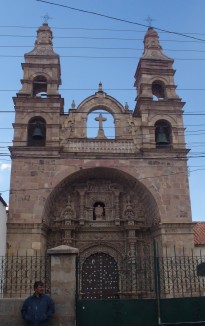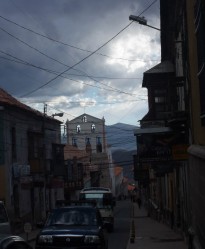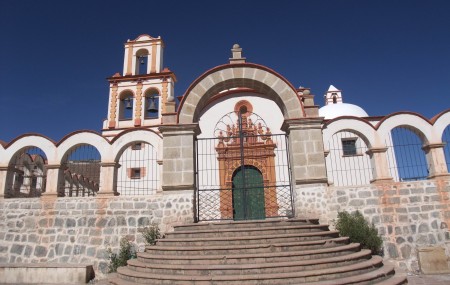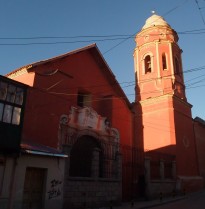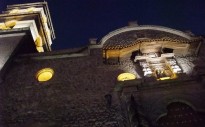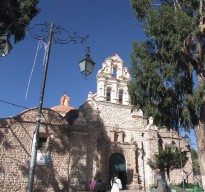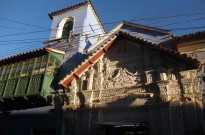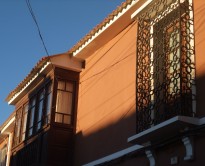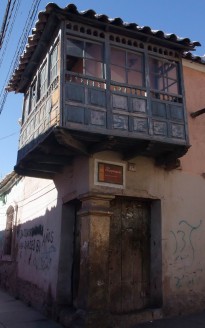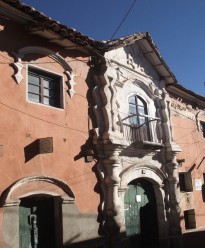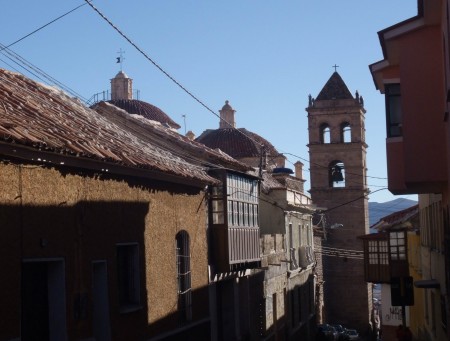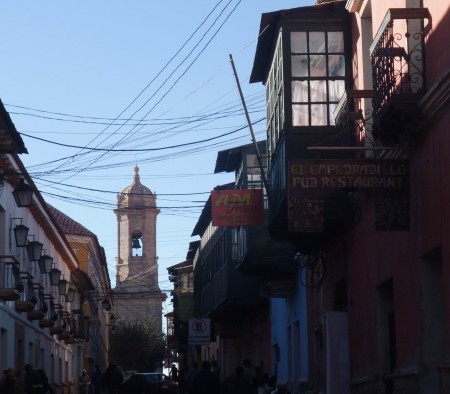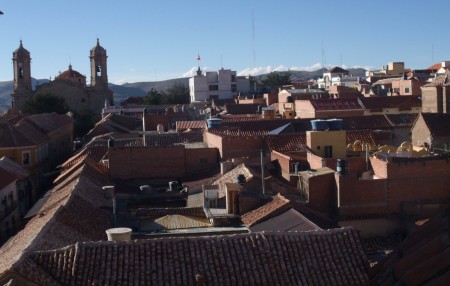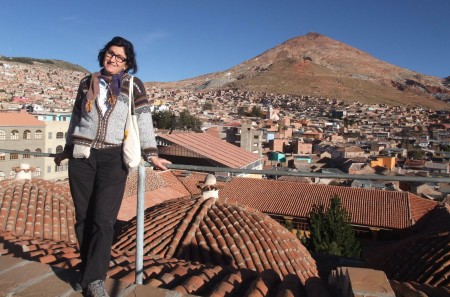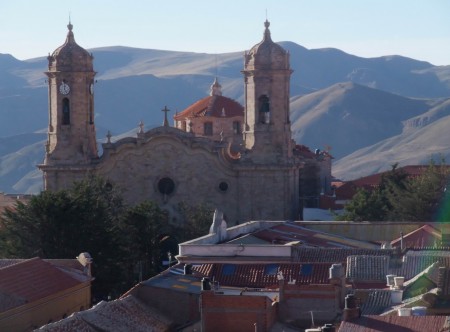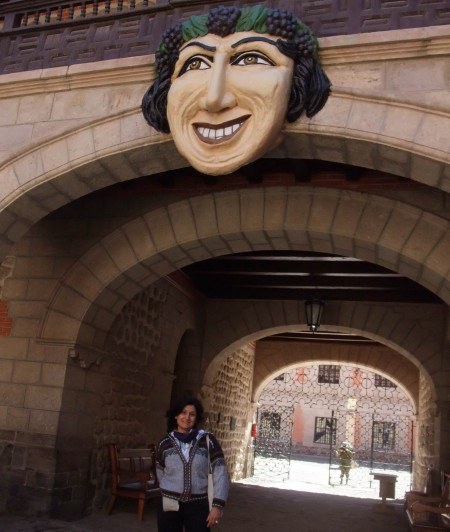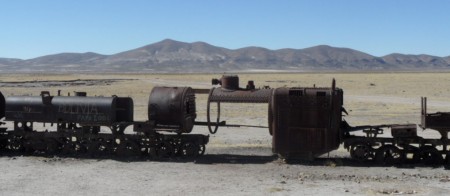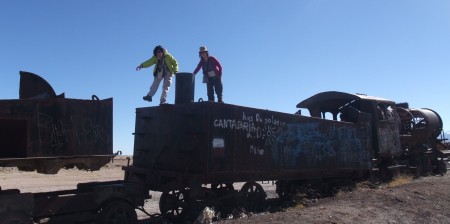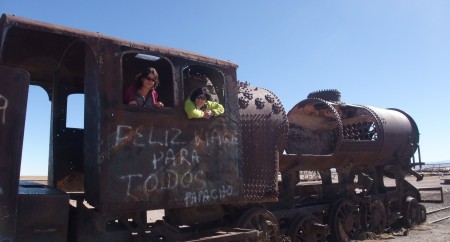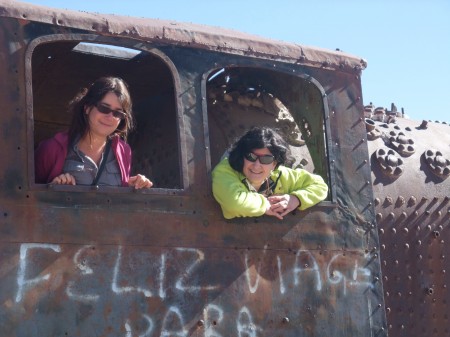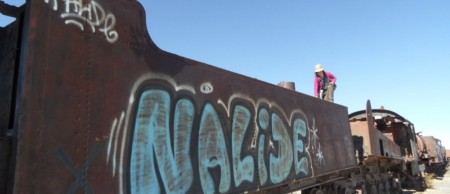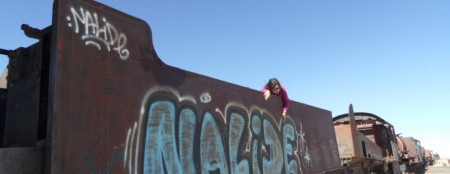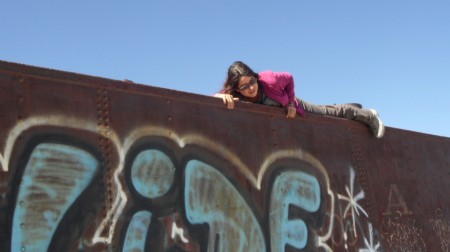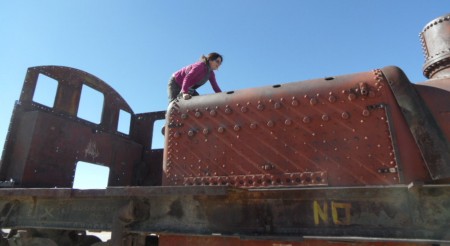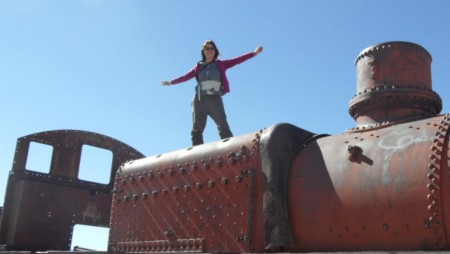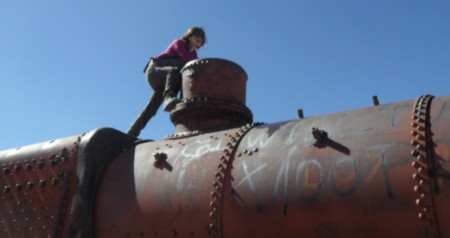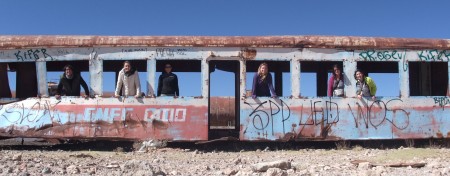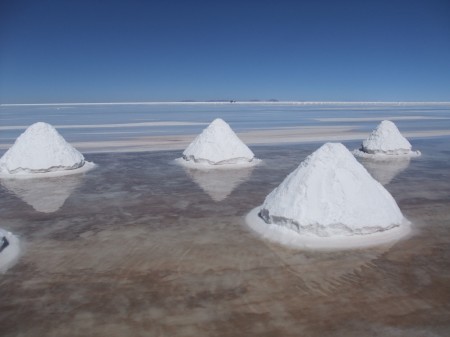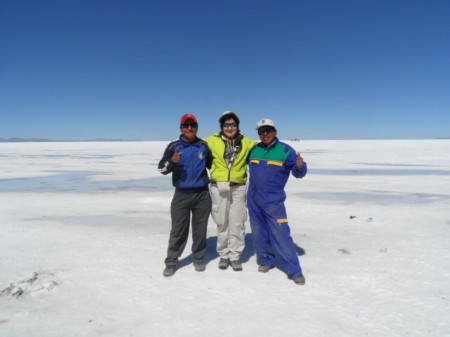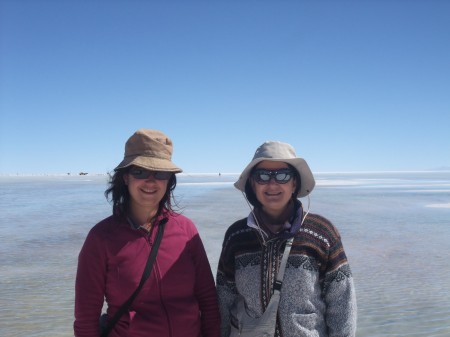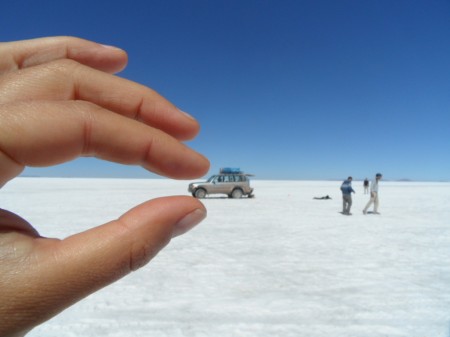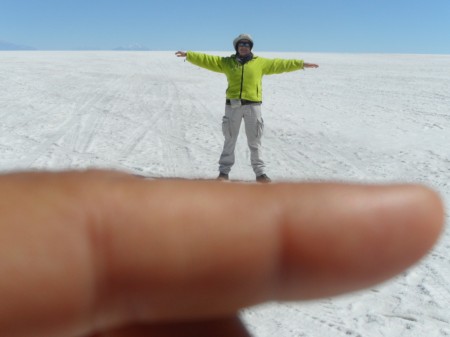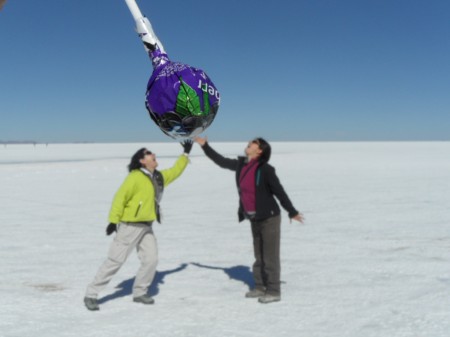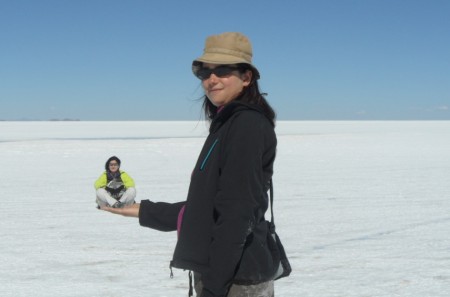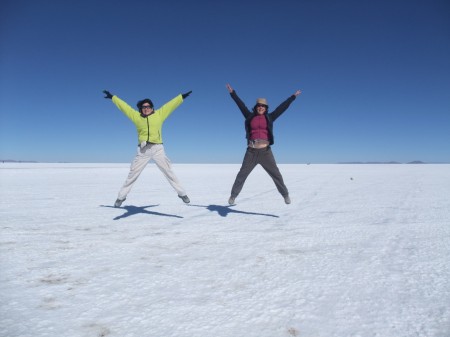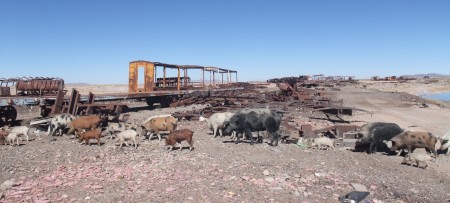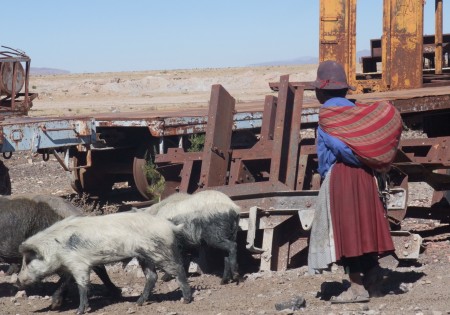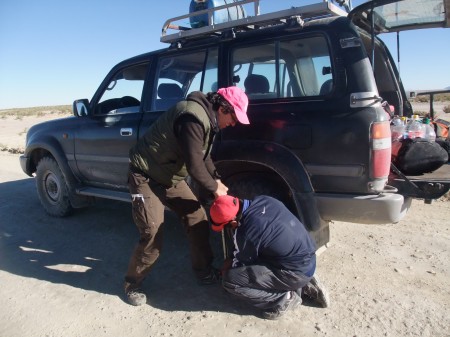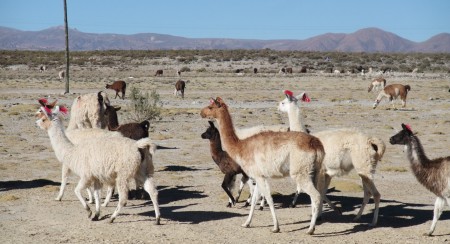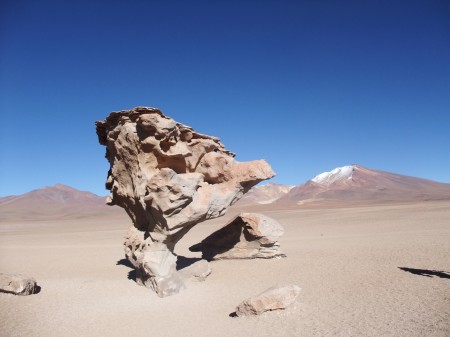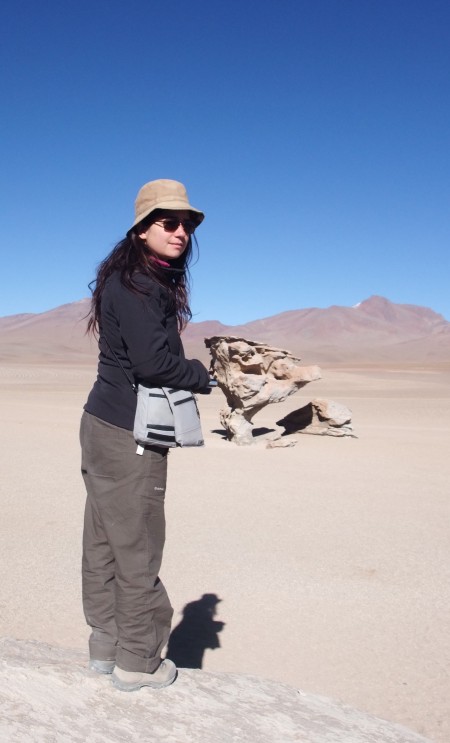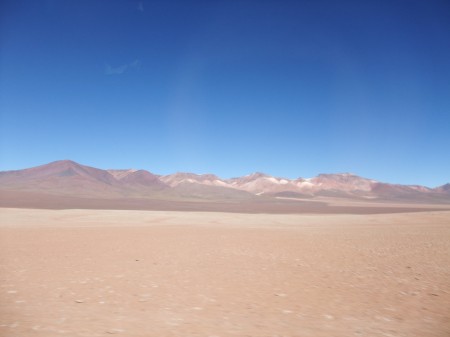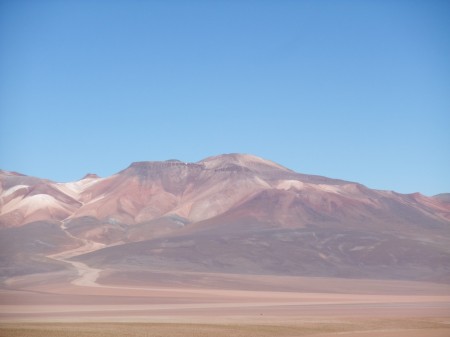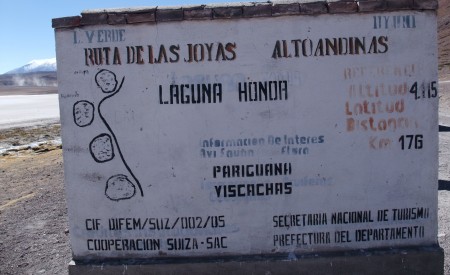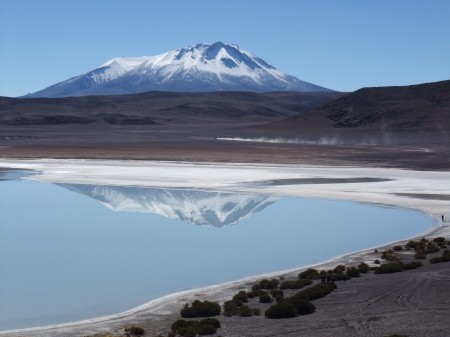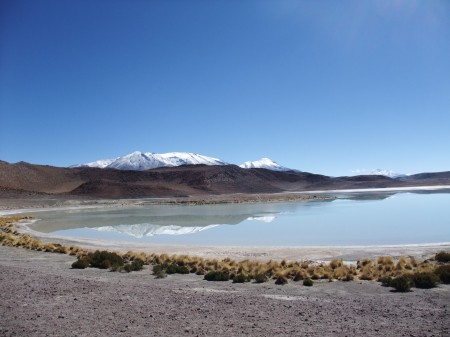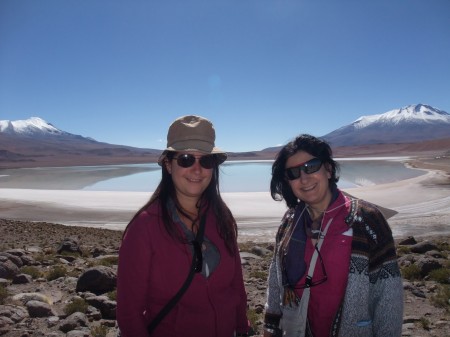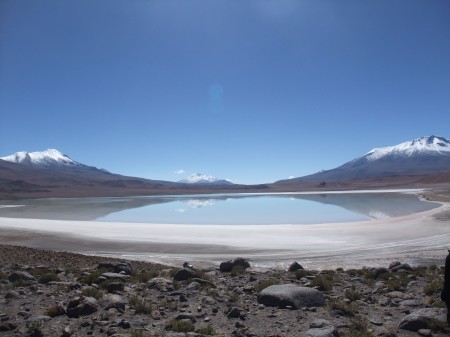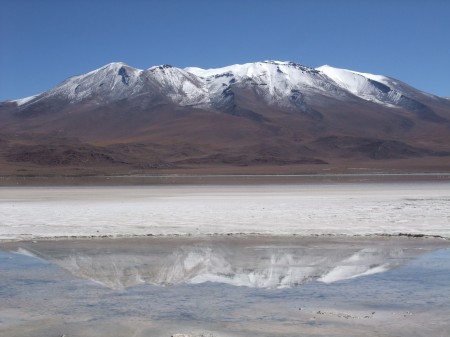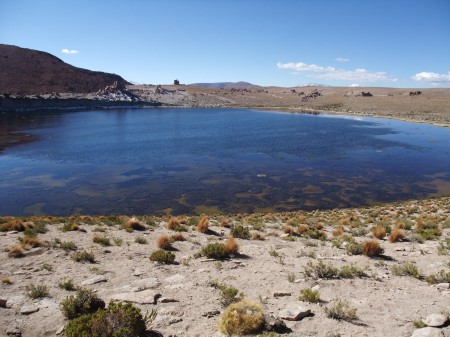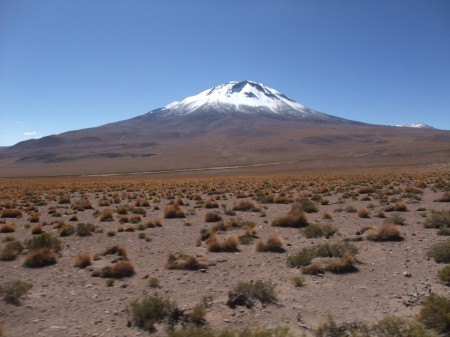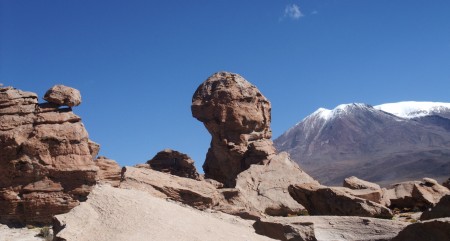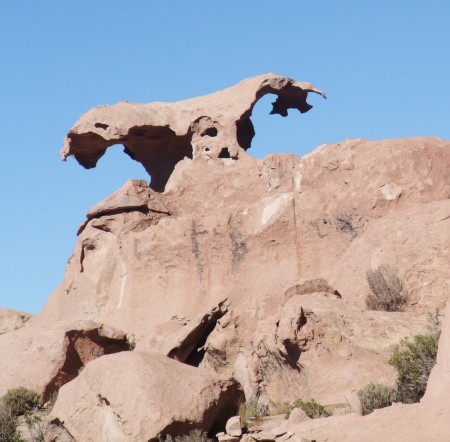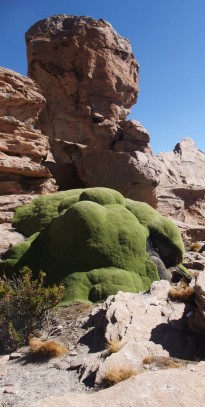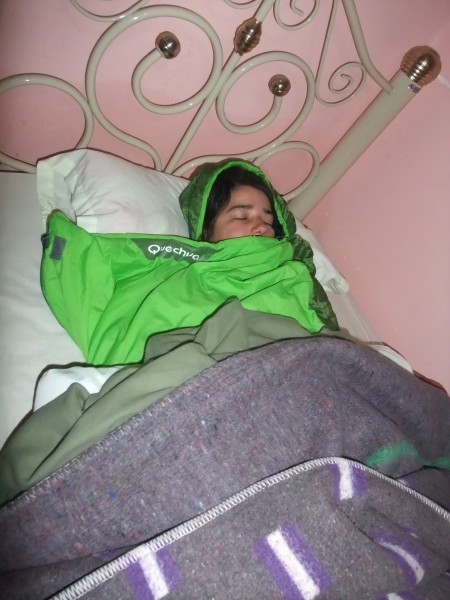POTOSI: The mine: Inside the depth of the earth …
Visit of the Cerro Rico’s mine (Rich Mountain) together with Helena our guide for the occasion
We bring like gifts, sticks of dynamite, coca’s leaves, and cakes for the miners whom we shall meet
The staying veins are little plentiful and the extraction becomes harder and harder. The working conditions are very painful for the miners
POTOSI : La mine : à l’intérieur du ventre de la terre…
Visite de la mine du Cerro Rico (Montagne Riche) en compagnie d’Helena notre guide pour l’occasion
Nous apportons comme cadeau, des bâtons de dynamite, des feuilles de coca, des gâteaux pour les mineurs que nous rencontrerons
Les filons restant sont peu abondants et l’extraction devient de plus en plus difficile. Les conditions de travail sont très pénibles pour les mineurs
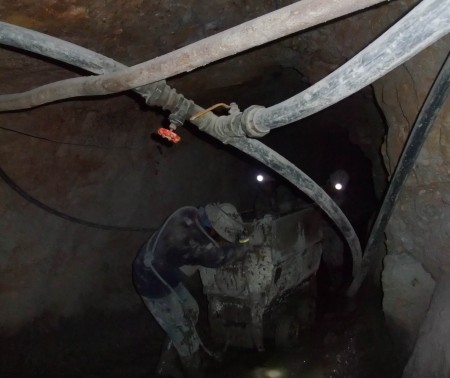
Dans la mine, lampe au front, nous nous enfonçons progressivement dans le noir et marchons courbées car les galeries ne sont pas hautes. Nous pataugeons dans la boue, l’eau; il faut marcher dans un étroit passage à l’intérieur des rails et de temps en temps se pousser sur le côté quand les mineurs passent en courant et en poussant un wagonnet lourd (1 tonne) chargé du minerai extrait
The Tio: the God of the mine
It Quechua the sound "D" is difficult to say and D about Dios (God) was transformed "T" where from Tio
How was it created?
In fact, Spanish noticed that little ore went out of the mine!
It was thus necessary to motivate the Indians who worked in mines. They had a God of the Earth (Pachamama) and a lot of the other gods in the native faiths.
Spanish thus invented them a god of the mine!
The God of the mine is represented by a sort of statue decked out by the attributes of a miner: cigarettes, bottle of alcohol, empty here (but the miners drink some surgical spirit!) food, coca’s leaves
Le Tio : le Dieu de la mine
En quechua le son « D » est dificile à dire et le D de Dios (Dieu) s’est transformé en « T » d’où le Tio
Comment a-t-il été créé ?
En fait, les espagnols s’apercevaient que peu de minerai sortait de la mine !
Il fallait donc motiver les indiens qui travaillaient dans les mines. Ils avaient un Dieu de la Terre (la Pachamama) et plein d’autres dieux dans les croyances indigènes.
Les espagnols leur ont donc inventé un dieu de la mine !
Le Dieu de la mine est représenté par une espèce de statue affublée des attributs d’un mineur : cigarettes, bouteille d’alcool, vide ici (mais les mineurs boivent de l’alcool à 90° !) de la nourriture, des feuilles de coca
Helena discusses with the miners to try to convince them to follow a program of class to learn another job (carpenter, plumber, joiner etc.) and leave the mine which does not give to them a lot of money
Helena discute avec les mineurs pour essayer de les convaincre de suivre un programme de cours pour apprendre un autre métier (charpentier, plombier, menuisier etc.) et quitter la mine qui ne leur rapporte pas beaucoup